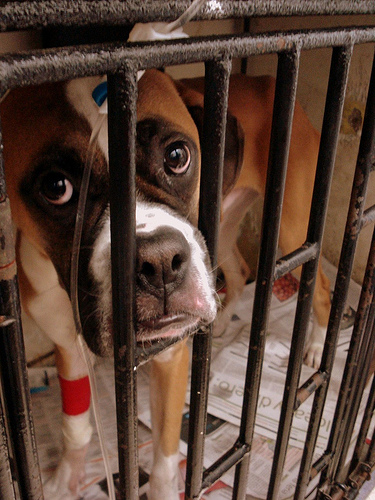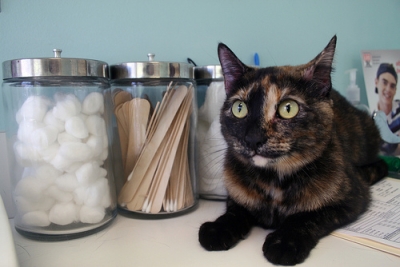
Horner’s Syndrome occurs when there is damage to the sympathetic nervous system. It is a neurological problem affecting the eye and facial muscles and can be seen in both cats and dogs.
The autonomic nervous system contains subsystems, one of which is the sympathetic which controls “fight or flight” stress responses of the body. The sympathetic works much like an emergency system.
When the sympathetic nervous system, in relation to the eye, is not functioning well or damaged, Horner’s Syndrome occurs. Causes can be trauma, a blood clot, a bite wound, middle or inner ear problems, eye diseases, tumor, invertebral disc disease.
Many cases of Horner’s Syndrome in dogs is idiopathic (of unknown origin). However with cats, the cause is mainly injury resulting from being hit by a car.
Signs of the disease can be a drooping eyelid, sunken appearing eyeball, a red, raised third eyelid. Ears can appear pinker and warm to the touch. Horner’s Syndrome can occur on one side of the face or both sides. The pet may drool and have difficulty eating with food often being caught in the drooping lip.
Your vet will ask for a complete health history of your pet. Diagnosis is made through blood tests, urinalysis, x-rays, sometimes a CT scan, MRI or a sample of cerebrospinal fluid.
When the underlying cause is discovered, it is treated as necessary.
If it proves to be idiopathic, Horner’s Syndrome usually resolves on its own in about 6-8 weeks.



